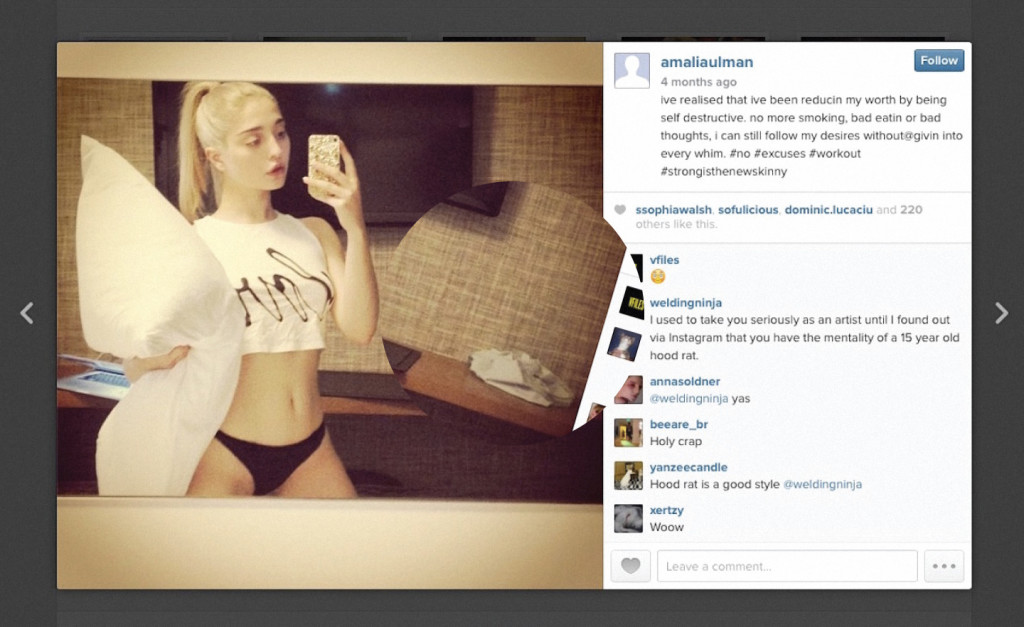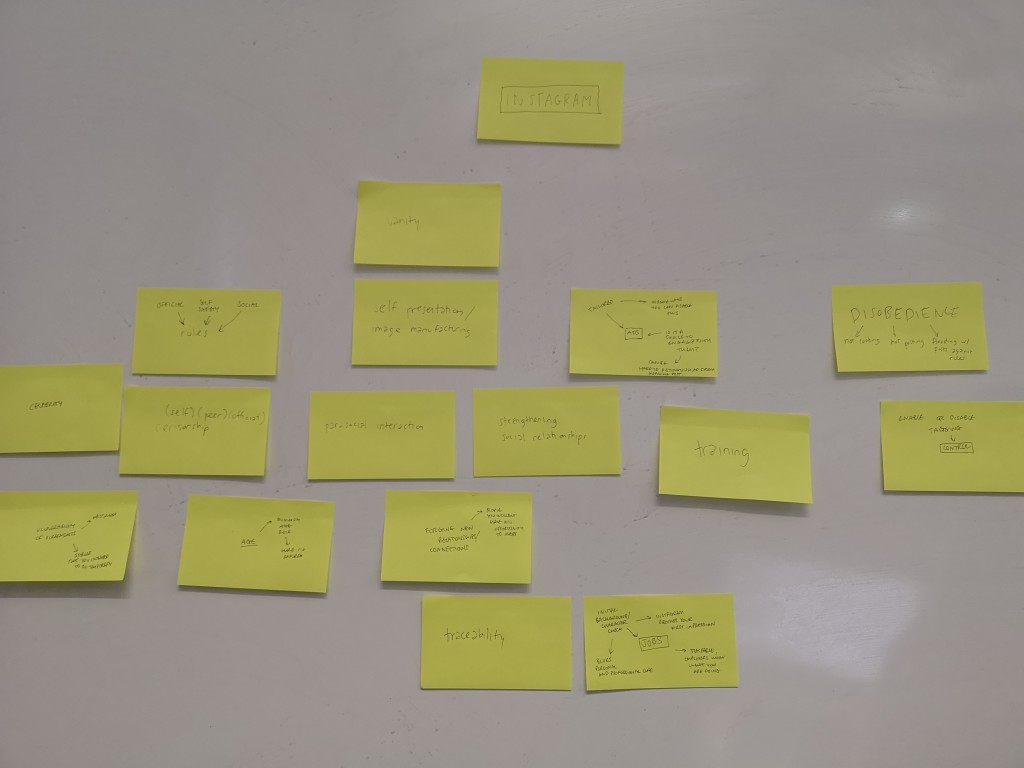 Excellences and Perfections by Amalia Ulman
Excellences and Perfections by Amalia Ulman
When I was thinking of a disobedient intervention into Instagram, my mind went to two extremes. One is using the platform to broadcast subversive narratives. I think of Amalia Ulman’s artwork “Excellences and Perfections,” a fictional narrative told through Instagram about the dark sides of image obsession. Or computer generated influencers like Lil Miquela. The subversive pop star Poppy. All these artists are playing with self-expression on Instagram and commenting on Instagram as a platform for it. But any expression within Instagram is still using and playing within their system. More likes, more views, more ads. I also couldn’t help but associate pushing falsehoods on Instagram with the darker pattern of fake news and misinformation.
The other extreme is being a ghost. I want to focus on a dark pattern of Instagram, of broadcasting viewing activity without explicit consent. I don’t post much on social media, and I prefer to look. I was horrified when I realized (from a thirdhand source) that when I viewed a person’s story on the new Stories feature, that person could see that I had viewed. I didn’t know what this notification looked like, so I imagined something really violating, like a real-time notification that someone had looked at you. Instagram doesn’t make you aware of this unless you post your own story, which can be a pretty vulnerable thing to do. This – telling people that you’re looking at them, without your explicit consent – is a new social optics that is unnatural in our physical society. It’s a dark pattern that I’ve noticed more and more on social platforms.
To a lesser extent, I worry about accidentally double-tapping to like a picture that I maybe shouldn’t have been looking at. Even where my swiping finger is, if it hovers precariously over a like button… it induces anxiety in me that I might push something I shouldn’t, that my private browsing will be exposed. This is an interface where it’s too easy to physically slip up and have real social consequences. Perhaps accidentally watching or liking something isn’t really that bad, but we don’t know how people will react. Feeling fragile and paranoid of being seen isn’t a good feeling to have on social networks.
I avoided looking at Stories for a while, feeling self-conscious. I used a Chrome browser extension to watch them for a while, but I could never be sure whether my views were being recorded. If they weren’t, my story watching experience became less efficient, as stories began to repeat themselves. I decided that my own privacy was less important than my convenient user experience. This is how it happens – how new dark user patterns begin to be accepted by society.
For my disobedient intervention, I’d use the Instagram API to pull images and stories onto a separate site which I can fat-finger my way all around without causing unnecessary social drama. Conceptually, this would be a sort of screen which disables interaction as you scroll through Instagram or any other social network. All of my activity would be hidden from Instagram and other users of the site. I wouldn’t see any ads, and when I would go on Instagram, they won’t be targeted at me. (Unless Instagram has ways of tracking API use, which I wouldn’t be surprised at.)
If I made this widely available, it would make social networks less social. It’d strengthen parasocial interaction while stunting real social interaction. Interaction would become more of a conscious, active thing, which maybe isn’t such a bad thing. It would promote stalking in the lighthearted sense, of being more curious to look at people without repercussions, but also enable it in a real, more sinister sense. I would feel more comfortable, but perhaps it would be more unequal for the people sharing. Self-presentation is easier when you know your audience, and this would make the audience a little bit more anonymous. Instagram wouldn’t be able to sell ads as effectively. The social network would know less about us. It’d be better for people like me who just like to look.
Original sociotechnical map of Instagram (created with Izzy McLellan and Elina Virdziniece):

Map of my refigured disobedient version:
